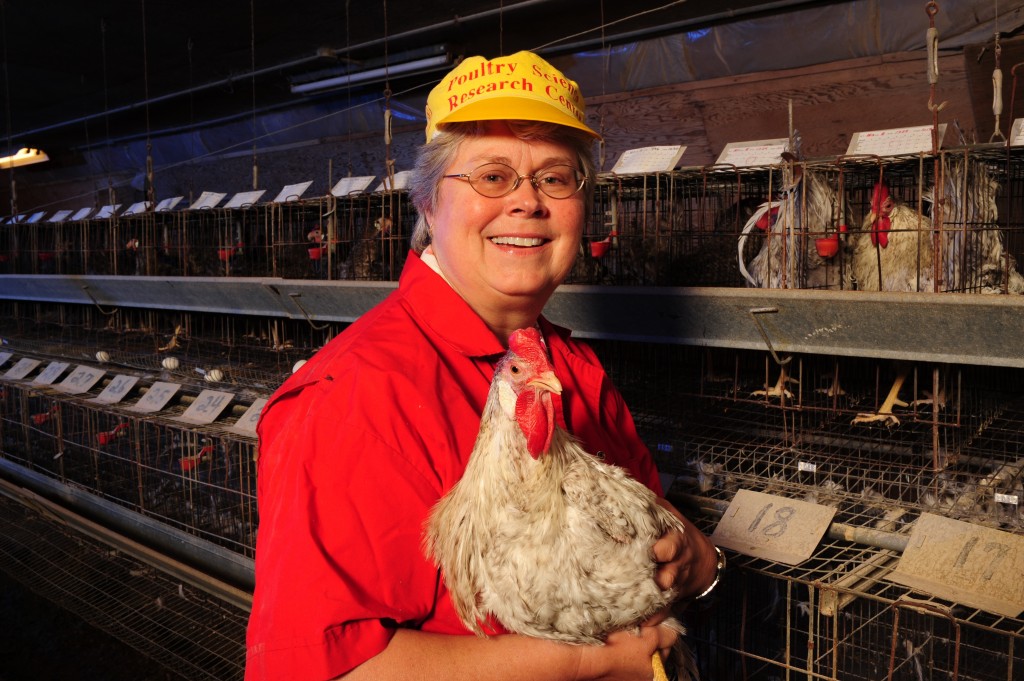
Genomics Tools Lead To Healthier, More Resilient Chickens
Susan Lamont was among the first to hear the announcement that the chicken would be the first farm animal species to have its genome sequenced.
She thought: “Yes!”
Lamont, a Charles F. Curtiss Distinguished Professor in animal science, is a leading expert in poultry immunology and molecular genetics. She knew the power of genomics tools that allow analysis of vast numbers of genes would take her research to a whole new level. Especially when combined with ISU’s unique poultry resources.
That’s what Lamont and colleagues have been doing since the chicken genome sequence was completed in 2004. One result: they’ve identified more genes linked to salmonella resistance than any other research team.
“With genetics and genomics tools, we’re assessing the best, most accurate information possible to select the best parents for the next generation of healthier, disease-fighting chickens,” she says.
The hoped-for result: birds that devote more energy to producing safe, nutritious eggs or meat than to fending off disease. Lamont’s research, which is funded by the USDA, also has looked at interactions of genomics and nutrition.
“We assess nonantibiotic dietary supplements that enhance immune response, especially against salmonella,” Lamont says. “Chickens from genetic lines may respond differently to these natural substances, which contain Vitamin C or yeast extracts. It may help improve poultry health while addressing consumer preferences for less antibiotic use in animals.”
Lamont also collaborates with faculty in veterinary medicine and statistics to examine differences in gene expression in birds infected with E. coli and those vaccinated against the bacterium.
“We want to understand what systems come into play that may predict a good outcome for E. coli contamination. It’s definitely research grounded in a systems biology approach, which we’re ideally suited to do at ISU, with expertise from all perspectives, from genomics and bioinformatics through applied work.”
A feather in ISU’s cap is its invaluable inbred research lines. Most were begun in the 1950s, although the oldest dates back to 1925. Some are familiar commercial lines. Others are noncommercial lines from the wild side of genetic diversity: birds native to Egypt and Spain that offer a much different genetic profile, including enhanced disease resistance.
“It’s my hope that our research proves potent to science and to breeders, producers and food-safety conscious consumers,” Lamont says.
“Our findings will benefit a diverse set of poultry production settings, from modern, sophisticated and environmentally controlled environments to women in the poorest areas of the world who want to raise chickens to raise their standard of living and improve their family’s situation. For the latter, enhancing innate resistance to disease will be very important because they are unable to control environment.”



